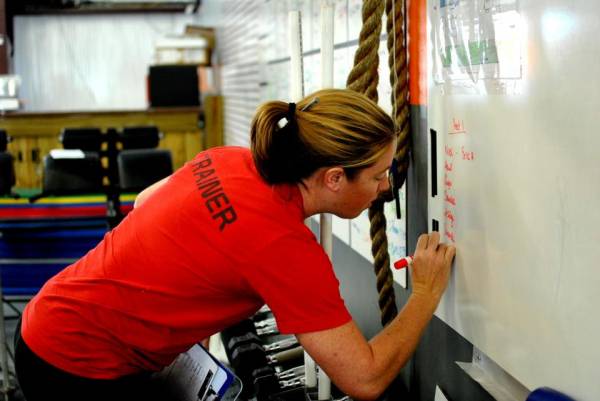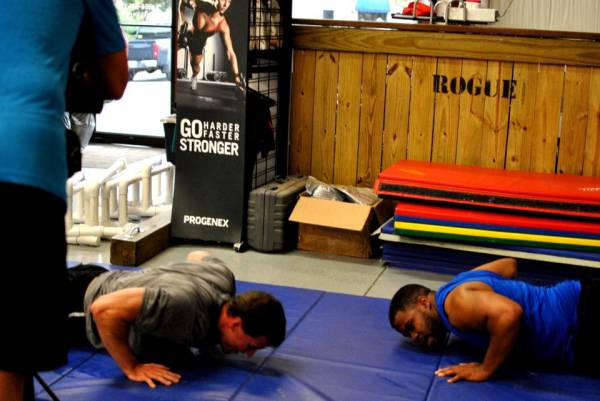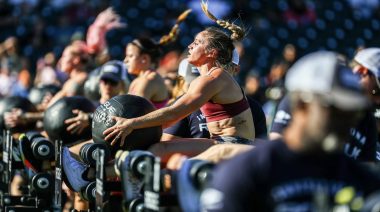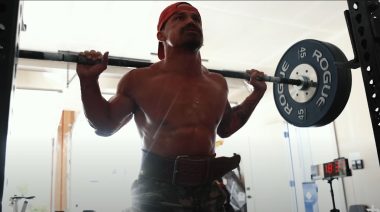The first installment in this series discussed the early life cycle of the CrossFitter: first, the honeymoon phase, where CrossFit is magic; then, the plateau, where your gains begin to level off. If you hit a plateau, which means you’ve stopped gaining, or you’ve begun to get soft, or maybe you are beginning to feel the early pangs of some sort of injury, then read on.
Once the plateau hits, there are three possible scenarios:
- Remain stagnant, or perhaps even lose the gains you have made
- Become injured
- Begin training
The first option doesn’t require any action or explanation, you’re already there, so let’s address numbers two and three in order.
Scenario #2: Become Injured
There is no question there are some people who have been CrossFitting for years and seem to be doing just fine. They come to the gym three or four times per week, work out, get a solid sweat on, and go home happy. This might even be the largest cross-section of the millions of people doing CrossFit. However, I would submit to you (stay with me here) that if you are one of these people, you have not maxed out your potential. You may fall into the category of the rank and file masses who embark on CrossFit as a hobby, an exercise program, and a social activity. Awesome. There is not a damn thing wrong with that.
But at the same time, you’re not pushing the envelope, and as such, you’re not making those textbook before-and-after picture gains. The people in this category are usually those who’ve really shown no visible sign of physical improvement, still enjoy a good deal of cheat food, and are mentally okay with using a band for pull ups. While they won’t likely fall victim to injury, they’re not really killing it either. Chances are if you’re reading this, you’re not even one of these people.
But if you fall into the other category of CrossFitter, the one who has taken this sport to heart and has made amazing early gains in body composition, strength, conditioning, and skill, and have hit that plateau, you stand at the precipice of a choice. One such choice, as we discussed in the previous article, was to chase those early results by doubling up on your metconnage. You fully immerse yourself in the “If CrossFit is good, more CrossFit must be better” mentality.
This, of course, will backfire. And if it does not cause you to over adapt, become soft, and perhaps even gain weight back while losing strength, the next logical step is injury. I have written a good deal about injury previously and it’s been covered extensively. Suffice it to say that if all you do is random, ass-kicking daily metcons day after day, month after month, with no real plan, then you are not only risking injury, but you have absolutely no method of plotting a course to your goals.
Let’s simplify it. CrossFit leads to results. CrossFit, by itself, most likely will lead to a plateau in those results. Plateaus lead to desperation for those same results. Desperation leads to more CrossFit. More CrossFit leads to injury. Why?
If you look at the sample week of WODs from CrossFit.com below, you will see why. Day after day of bone crushing workouts.
So what is the answer? Training.
The Only Sustainable Option: Begin Training
 Have you ever wondered why there is a quiet but growing trend among CrossFit gyms of co-branding? Why are a lot of boxes now becoming Blue State Strength and Conditioning, Home of CrossFit Bluestate? It’s because many wise and forward-looking affiliate owners see there is a need for a second-level tier of fitness called training. Training can still be CrossFit, but it differs in that there is logic and progression to the constantly varied nature of the programming. Meaning, there is a goal in mind – and a pathway to that goal.
Have you ever wondered why there is a quiet but growing trend among CrossFit gyms of co-branding? Why are a lot of boxes now becoming Blue State Strength and Conditioning, Home of CrossFit Bluestate? It’s because many wise and forward-looking affiliate owners see there is a need for a second-level tier of fitness called training. Training can still be CrossFit, but it differs in that there is logic and progression to the constantly varied nature of the programming. Meaning, there is a goal in mind – and a pathway to that goal.
As a means of comparison, let me take you through a single week of CrossFit.com programming beginning with Saturday, December 28, 2013:
- Day 1: “TK” (Hero) – 20 min. AMRAP: 8 strict pull-ups, 8 36” box jumps, 12 kettlebell swings, 2 pood
- Day 2: Rest
- Day 3: 15-12-9-6-3: chest to bar pull-ups, #135 clean and jerk, push-ups
- Day 4: handstand walk 100m
- Day 5: 5 rounds: 20 strict ring dips, #135 thruster, 14 reps
- Day 6: Rest
- Day 7: “Hard Cindy” AMRAP 20 of 5 weighted pull-ups, #35, 10 push-ups with feet elevated, 15 squats with a #45 plate
What you see here is that you are getting zero strength training in this week. You are getting pummeled, day after day, with long, heavy metcons. Every last one of those is a twenty-minute workout. Does that look like the programming at your box? If so, I would submit that you cannot sustain a pace like that. You will be ground to a pulp within a year.
Training, on the other hand, may look something like this:
- Snatch Balance: 3-3-3. Light and fast, focus on getting under the bar quickly.
- Snatch: 15 minutes to build to a max.
- 5 sets: 300m. Row, 6 burpee box jump overs, 9 wall ball #30, 45 double unders. Rest 2:00 between sets. Maintain even time across sets.
Now, you may look at this and say, “Whoa, resting during a metcon? What gives?” What gives is that rest between sets allows for a completely different strategic approach to each round. You can work with higher intensity during a round where rest is imminent, learn to pace, test out shorter bursts, and understand how rest allows your battery to recharge. Plus, it allows you to train instead of just metcon all the time.
But how is this “training” different? Well, fast-forward one week and you may see something like this:
- Snatch Balance: 2-2-2. Light and fast, focus on getting under the bar quickly.
- Hang Snatch: 15 minutes to build to a max.
- 6 sets: 300m. Row, 6 burpees jumping to a 6” target, 7 chest to bar pull ups, 40 double unders. Rest 2:00 between sets. Maintain even time across sets.
See what’s going on here? The snatch balance has changed to just two reps per set allows you to increase the weight per set over last week. The snatch has changed to a hang snatch, allowing you to continue to work on snatch technique while altering the methodology a bit. And the conditioning piece has changed, ever so slightly.
 You’re now doing six rounds of essentially the same conditioning piece, with a slightly different burpee variation, chest-to-bars instead of wall ball, and more double unders. Next week, this may look similar, i.e. still six sets but the rest may be reduced to ninety seconds between sets. The burpees may change, the overall make-up of the rep scheme may alter, but what you see is a pattern. The pattern you should begin to see emerging is small, incremental upticks in the intensity and overall rep scheme. This incremental increase over time allows you to improve, consistently and surely, and continue to work toward your goals – whether those goals be general fitness, increased strength, or competition.
You’re now doing six rounds of essentially the same conditioning piece, with a slightly different burpee variation, chest-to-bars instead of wall ball, and more double unders. Next week, this may look similar, i.e. still six sets but the rest may be reduced to ninety seconds between sets. The burpees may change, the overall make-up of the rep scheme may alter, but what you see is a pattern. The pattern you should begin to see emerging is small, incremental upticks in the intensity and overall rep scheme. This incremental increase over time allows you to improve, consistently and surely, and continue to work toward your goals – whether those goals be general fitness, increased strength, or competition.
In my training, I know I am snatching on day one, doing back squats on day two, lactic endurance work on day three, more snatches and front squats on day four, and mixed-modal training on day five. That is a template that morphs over time and will have me peaking for the CrossFit Games Open. I can see measured progress in all areas of my fitness, and best of all, I am injury free.
The life-cycle of a CrossFitter does not need to end in plateau or injury. You can maintain a life time of progressive, goal-based fitness by beginning to move away from pulp-grinding, ass-kicking metcons into a solid, periodized course of training.
Questions? Please do not hesitate to post them to the comments below or email me at mcpilot@cinci.rr.com.
Read part one of this series: The Life Cycle of a CrossFitter, Part 1: The Dreaded Plateau
Photos courtesy of CrossFit Impulse.






